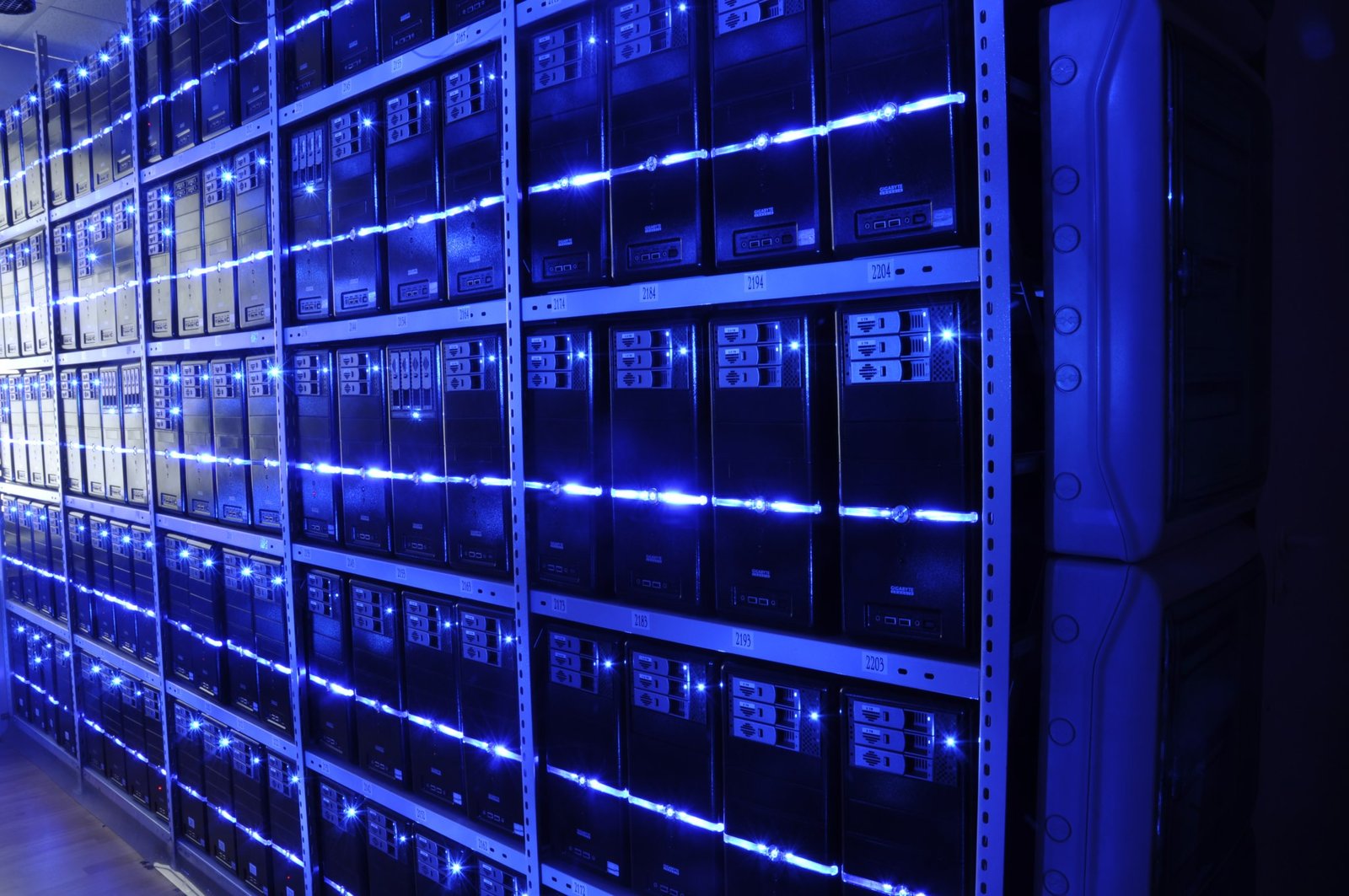Picture this: every time you ask your digital assistant a question, stream a recommended video, or let your smartphone translate a few lines of text, you’re tapping into a vast ocean of machine intelligence. But lurking beneath this digital surface is a shocking truth—artificial intelligence (AI) comes with a hidden environmental impact that is easy to overlook. With AI systems growing smarter and more powerful every day, their hunger for energy soars higher and higher. It’s an invisible cost, one that’s shaping the future of our planet in ways few ever imagined.
The Unseen Footprint of AI

When most people think of AI, they imagine sleek robots, clever apps, or futuristic cars. Hardly anyone pictures rows of humming servers in sprawling data centers, working relentlessly around the clock. Yet, these data centers are the real backbone of machine intelligence. Every AI-powered product or service depends on such massive hardware, which consumes extraordinary amounts of electricity. As AI models become more complex—capable of recognizing faces, understanding languages, and predicting behaviors—the computational effort required grows exponentially. This effort translates directly into more energy being drawn from the grid, often sourced from fossil fuels. The hidden footprint of AI is vast, stretching from the smallest chatbot to the world’s largest supercomputers.
Training Giants: The Power-Hungry Process

Training an advanced AI model is like raising a digital giant. It demands repeated runs through enormous datasets, sometimes for weeks or even months. Each iteration refines the system’s intelligence, but at a staggering energy cost. For example, the training of a state-of-the-art language model can reportedly consume as much electricity as several households use in an entire year. The larger the model, the more data and cycles it needs, multiplying the power required. Unlike traditional software, which might run on a single computer, AI training is distributed across thousands of high-performance processors working simultaneously. This process emits a surprising amount of heat and carbon dioxide, contributing to global warming in ways that are rarely visible to the end user.
Data Centers: The Beating Heart of AI

Data centers are the unsung heroes—and villains—of the AI revolution. These facilities house countless servers stacked in cold rows, cooled by powerful air conditioning systems designed to prevent overheating. The world’s largest data centers can be the size of several football fields and require dedicated power plants to keep their operations running smoothly. AI workloads now account for a growing share of their energy demand, often outpacing traditional internet activities like web browsing or email. The electricity used by data centers worldwide is astronomical, accounting for an estimated 1-2% of global energy consumption. As AI becomes more mainstream, this figure is projected to climb even higher, raising urgent questions about sustainability.
Carbon Emissions and Climate Impact
The environmental impact of AI extends far beyond electricity bills. Most power grids still rely heavily on coal, natural gas, or oil, which means that training or deploying an AI model often results in significant carbon emissions. These emissions contribute directly to climate change, compounding the challenges humanity already faces. A single advanced AI project can produce as much carbon dioxide as dozens of transatlantic flights. This reality has sparked intense debate among scientists, engineers, and policymakers about the trade-offs between technological progress and environmental responsibility. Can we truly call AI “smart” if its success comes at the expense of the planet’s future?
AI at the Edge: Pushing for Efficiency
Not all AI systems are created equal. While some require vast data centers, others are designed to run efficiently on smaller devices, closer to where data is generated—a concept known as “edge AI.” These edge systems process information locally, reducing the need to send data back and forth to distant servers. This approach not only saves time but also dramatically cuts down on energy use and associated emissions. Imagine a smart camera that analyzes movement on-site, or a wearable device that identifies health risks without needing a constant internet connection. Edge AI promises a greener future, but it requires innovation in hardware and software to make intelligence both powerful and efficient.
Renewable Energy: Lighting the Way Forward
As concern over AI’s energy appetite grows, the spotlight turns to renewable energy. Some of the world’s leading tech companies are racing to power their data centers with wind, solar, and hydroelectric sources. This transition is not just about corporate responsibility—it’s a crucial step toward reducing AI’s carbon footprint. However, renewables are not always available around the clock, and storing green energy for use during high-demand periods remains a challenge. Despite these hurdles, every watt of clean energy used for AI is a step away from fossil fuels and a step closer to a sustainable digital future.
Efficiency by Design: Smarter Algorithms, Greener AI
A revolution is quietly underway in the way AI systems are designed and trained. Researchers are developing algorithms that can learn more from less data, require fewer training cycles, or operate with reduced computational power. Techniques like “model pruning” and “quantization” strip away unnecessary complexity, making AI leaner and less energy-intensive. These innovations mean that future AI models could deliver the same—or even greater—intelligence while using a fraction of the energy required by today’s giants. The race to build greener AI is as much about clever engineering as it is about raw computing muscle.
Real-World Impacts: From Climate Research to Conservation
Ironically, AI is also proving to be a powerful ally in the fight against environmental destruction. Machine learning models help predict weather patterns, monitor deforestation, optimize energy grids, and track endangered species. These applications can lead to smarter decisions and more effective conservation efforts, potentially offsetting some of AI’s own environmental costs. For example, AI-driven climate models offer unprecedented accuracy in forecasting extreme weather, helping communities prepare for disasters. The challenge is to balance AI’s benefits with its drawbacks, ensuring that its positive impacts outweigh the negative.
Policy and Industry Response

Governments and industry leaders are waking up to the environmental costs of AI. New regulations and voluntary standards are emerging to encourage greater efficiency and transparency in data center operations. Some companies now publish detailed reports on their energy use and carbon emissions, inviting public scrutiny and accountability. Incentives for green energy adoption and penalties for excessive waste are reshaping the landscape of machine intelligence. The hope is that by setting clear rules and expectations, society can harness the power of AI without sacrificing the health of the planet.
The Human Element: Choices and Awareness

At the end of the day, the energy cost of AI isn’t just a technical issue—it’s a human one. Every click, query, and innovation is a choice that echoes across the environment. Consumers can demand more sustainable products, support companies committed to green energy, and stay informed about the unseen impacts of their digital lives. Developers and engineers, too, carry the responsibility to build smarter, more efficient systems. By fostering awareness and embracing sustainability, we can ensure that machine intelligence uplifts society without weighing down the world.
Looking Ahead: A Greener Intelligence
AI’s energy appetite is a challenge, but it’s also an opportunity—a chance to rethink how we build, power, and use the technologies shaping our future. With bold innovation, honest conversation, and determined action, machine intelligence can become a force for both progress and preservation. The question remains: will we seize this moment to create a smarter, greener world, or let the invisible costs of AI go unchecked?




